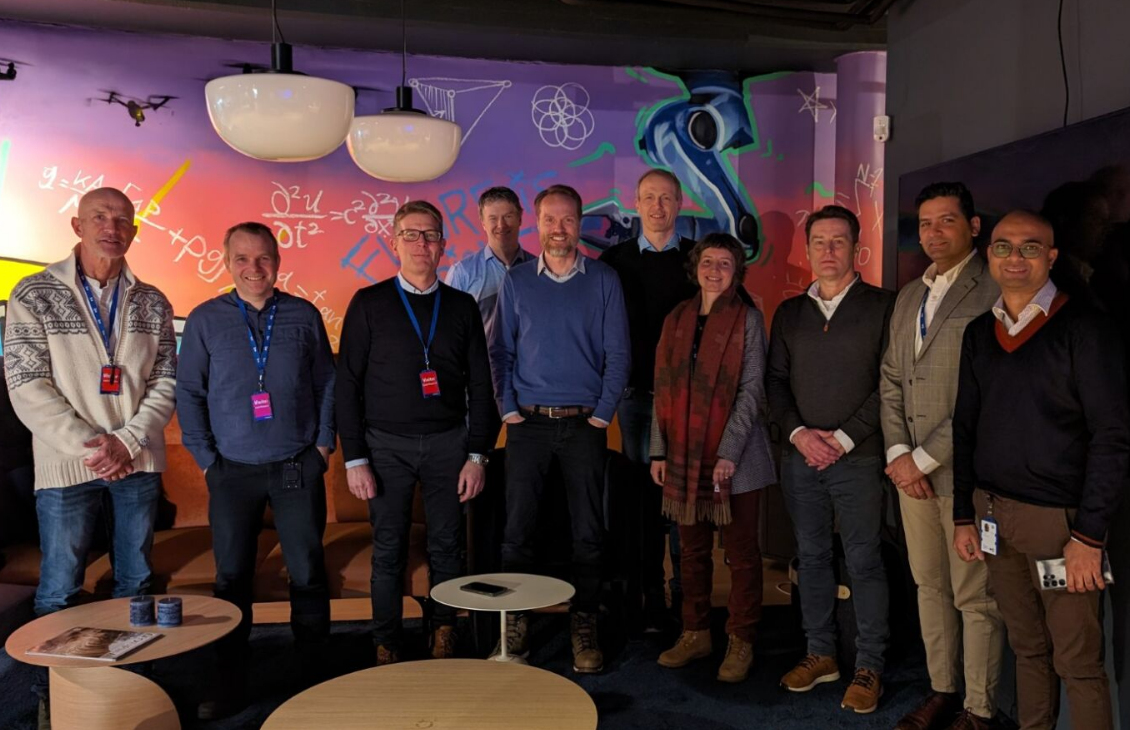Spotlight on INNOVATION FACTORI Oslo

Our INNOVATION FACTORI locations aim to solve local challenges by bringing together a world-class team of domain data and AI experts to develop customized solutions. We sat down with Oslo INNOVATION FACTORI Manager, Nils Kjetil Vestmoen Nilsen to talk about how the Oslo INNOVATION FACTORI, is bringing that aim to life.
Could you tell us a bit about your center?
We’re co-located with the SLB Norway Technology Center in an area that I would call the energy center of Oslo, close to many customers and companies we partner with. It’s a cluster for energy innovation in the same sense that Silicon Valley is a cluster for technology innovation more broadly. This fosters a creative environment where energetic, brilliant people can come together and draw on the local pool of expertise to push the boundaries of data and AI for the energy industry.
As collaboration is an essential element of success for INNOVATION FACTORI, can you tell us about a recent project where collaboration played a key role?
Yes so, the way the story started was that in conversation with [a local customer] they asked us how we could move the needle on geosteering to do it smarter, better, faster, and in a more emissions friendly way. These are words that everyone is talking about and interested in making a reality, so we said let’s do this.
We sat down and started discussing current challenges, listing goals and proceeded to play around with ideas and map out the user journey using design thinking tools. It was like meeting the perfect dancing partner. We knew what we were driving towards. A common vision of landing the perfect well.
Cost efficiency was an important priority for [the customer] and in INNOVATION FACTORI we can think big, but we start small and scale intentionally to fit our customers’ goals. We created an execution plan, determined the chunks of value that could be performed within three months, and kicked it off, closely collaborating with the customer along the way.
We combined cross domain expertise to better map the subsurface. Using geosphere data, with geological priors, and machine learning models, we were able to measure and interpret the data in real-time. This combination enables interpreters to avoid distractions brought on by false positives, which would sometimes take days to resolve. These outcomes are really a result of the open and close knit collaboration we started with the customer.
We’re driving it together and integrating different domains as needed to come up with solutions that are really tailored to [the customer], enabling them to get value in record time.
How is AI being used to address local energy industry challenges?
Scandinavia is a highly digitalized region and has long been an early adopter of new technologies, this is enhanced by incentive structures from governments that stimulate innovation adoption.
There are many brownfield sites in the region. So, one key challenge is getting more out of reservoirs that have already been in operation for some time and identifying new or missed opportunities for our customers. It’s an optimization problem, which is the perfect challenge for AI.
A key area where we’re using AI, and now GenAI is in the subsurface. We can use GenAI for seismic data, not just on text but also on the images themselves to generate new insights. We’re also using this technology in applications beyond conventional oil and gas, to better search for and screen areas for CO2 storage.
AI is playing a key role in other areas of the energy transition too, where AI is an essential component in our approach to digitalizing the CCS value chain.
What trends in AI and energy do you foresee being significant in your region in the next few years?
In the context of AI and GenAI things are moving very fast so it's impossible to forecast exactly, but in the next few years I see AI helping our experts make better decisions for faster, more economic, and emissions friendly operations across the board. The application of GenAI promises increased accessibility and applicability of data-driven solutions to larger parts of the value chain.
The greatest challenge is scaling, which results from data, governance, and other soft factors but if we can deploy more of the AI and GenAI solutions we’ve been building in the lab on brownfield sites and integrate them with existing infrastructure, then there is huge potential to increase production.
Today there are many uses for AI from daily drilling reports to geological surveys, but around the five-year time horizon there will be many more. You may be able to give the AI a high-level task, some wellbore data, and ask it to build you a geologically realistic model that identifies the highest prospects, and it will carry it out for you.

